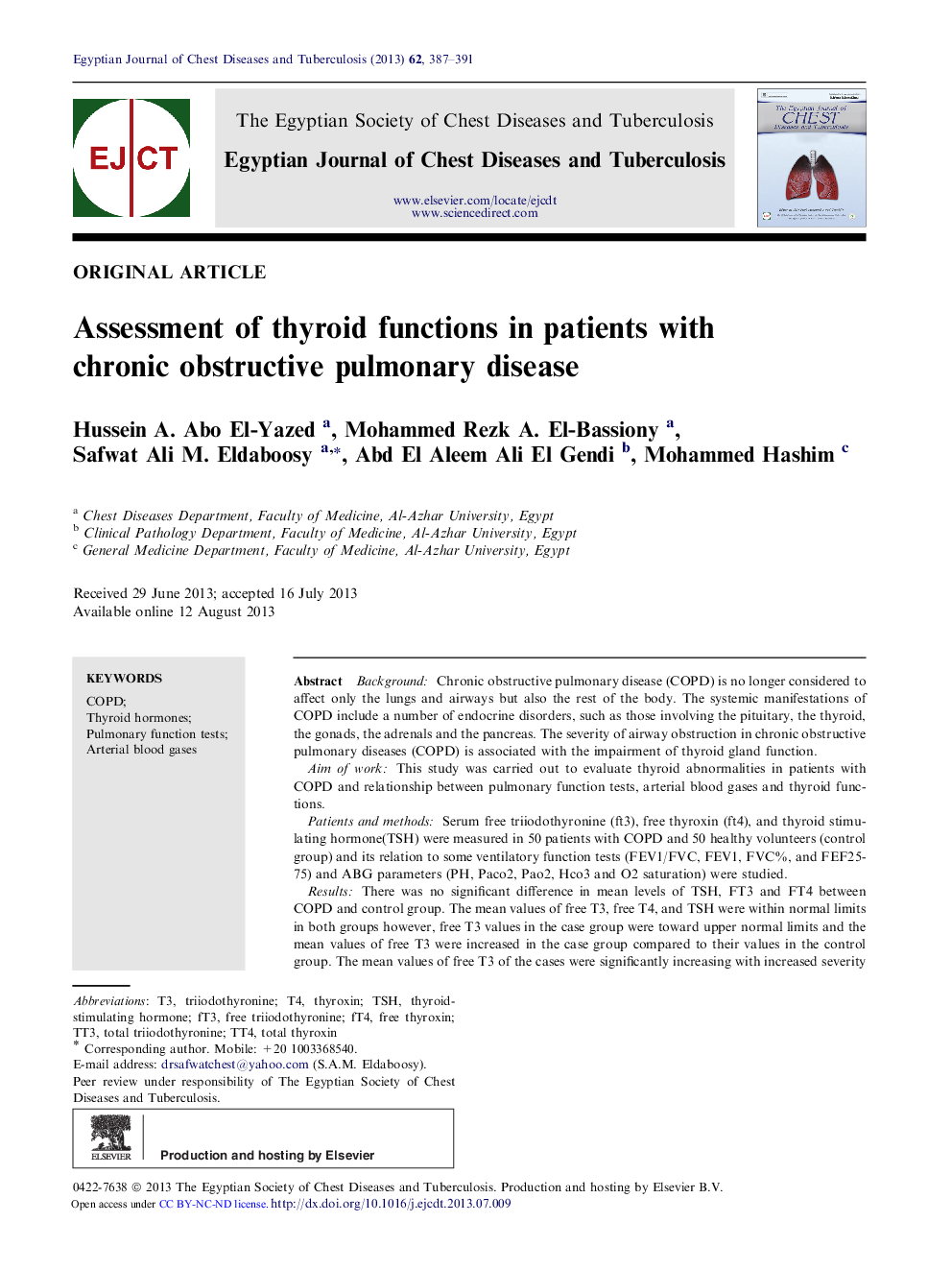| Article ID | Journal | Published Year | Pages | File Type |
|---|---|---|---|---|
| 3400458 | Egyptian Journal of Chest Diseases and Tuberculosis | 2013 | 5 Pages |
BackgroundChronic obstructive pulmonary disease (COPD) is no longer considered to affect only the lungs and airways but also the rest of the body. The systemic manifestations of COPD include a number of endocrine disorders, such as those involving the pituitary, the thyroid, the gonads, the adrenals and the pancreas. The severity of airway obstruction in chronic obstructive pulmonary diseases (COPD) is associated with the impairment of thyroid gland function.Aim of workThis study was carried out to evaluate thyroid abnormalities in patients with COPD and relationship between pulmonary function tests, arterial blood gases and thyroid functions.Patients and methodsSerum free triiodothyronine (ft3), free thyroxin (ft4), and thyroid stimulating hormone(TSH) were measured in 50 patients with COPD and 50 healthy volunteers (control group) and its relation to some ventilatory function tests (FEV1/FVC, FEV1, FVC%, and FEF25-75) and ABG parameters (PH, Paco2, Pao2, Hco3 and O2 saturation) were studied.ResultsThere was no significant difference in mean levels of TSH, FT3 and FT4 between COPD and control group. The mean values of free T3, free T4, and TSH were within normal limits in both groups however, free T3 values in the case group were toward upper normal limits and the mean values of free T3 were increased in the case group compared to their values in the control group. The mean values of free T3 of the cases were significantly increasing with increased severity of COPD. Significant negative correlations were present between free T3 levels and pulmonary function tests of the cases. Significant negative correlations were present between free T3 levels and both PaO2 and SO2 of the cases and also show a significant positive correlation between free T3 levels and PaCO2 of the cases.ConclusionThyroid function tests among COPD patients showed a significant increase of the mean free T3 values and a non significant decrease of the mean free T4 and TSH values compared to the control group. With increasing severity of COPD, the mean free T3 values showed a significant increase. Significant negative correlations were noticed between free T3 levels and both PaO2 and SO2 of the cases. A significant positive correlation was observed between free T3 levels and PaCO2 of the cases. Significant negative correlations were observed between free T3 levels and pulmonary function tests of the cases.
